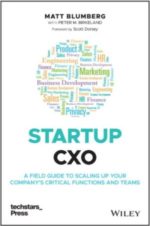links for 2006-06-26
-
Slice of Lime, Inc. CEO Kevin Menzie, who I have known for years, writes a good summary of his thoughts on the early days of getting a startup off the ground and growing fast!
Environmentally Unsound
I received in the mail yesterday (by overnight priority mail, no less), a 400+ page prospectus from Mittal, a Dutch company in which I apparently own a few shares of stock through a managed mutual fund I’m part of. This book was BIG – well over 2 inches thick and big enough to have a binding strip instead of staples. And it had enough legalese in it to put anyone to sleep.
What did I do with it? After ranting about how silly it was to ever print such a thing for mass push distribution to an audience that largely doesn’t care about it — straight into the trash. With a big thud, of course.
What a ridiculous waste. Why print it on paper at all? Make it available online via pdf. Email shareholders or send them a postcard or leave an automated voicemail and ask them if they want a hard copy. Figure out which shareholders are in a managed fund, and send a single copy to the fund manager, since the individuals don’t even know they’re shareholders or don’t make decisions about individual stocks in the fund. Do something that costs less and doesn’t destroy trees that 99% of people will never read.
Shame on Mittal and their bankers, proudly displayed on the cover of the book — Goldman Sachs, Citigroup Credit Suisse, HSBC and Societe General.
A Good Laugh at Microsoft’s Expense, Part II
A Good Laugh at Microsoft’s Expense, Part II
Three minutes of quick video entertainment awaits you. What if Microsoft redesigned the iPod packaging? Watch here. This could be any big company, not Microsoft.
Makes you really realize how much “less is more” in terms of product design and packaging. Like Google.
Thanks to Frank Addante from StrongMail for turning me on to this clip. See Part I if you want another quick clip about punishing developers for buggy code.
links for 2006-06-16
-
Brad tipped me off to this article — it’s a good one and draws on a lot of the work and thinking done by Jim Collins in both Good to Great and Built to Last (links to both books on my blog in the books sidebar).
Counter Cliche: Sometimes You Need a Shortstop
Counter Cliche: Sometimes You Need a Shortstop
Fred’s Chiche of the Week this week is about drafting the best available (corporate) athlete. I think he’s right lots of the time, especially in startup companies where people need to wear multiple hats. And it might also be a good rule of thumb in larger companies, when you want to have flexibility to move managers around from group to group and get them to easily take on new challenges or responsibilities.
But sometimes, you just need a shortstop, and if you were the GM of a baseball team, your manager or owner would be pretty ticked off if you went out and hired a decathlete for the job. Companies who are in the "medium size" stage (and probably larger companies as well, under certain circumstances) are often creating new functions and departments that require people with specialized knowledge or experience, whether domain or functional, to get the business to the next level. So you may want the most versatile shortstop you can find (maybe one who could play second or third base in a pinch), but at a minimum you need a great middle infielder.
One of my other board members, Greg Sands, described the phenomenon of companies growing out of the startup stage once to me as a comparison to cell development in small organisms. As the organism grows, cells have to specialize for the organism to adapt to its new environment. I guess this post could also have been called "sometimes you need a spleen," but that wouldn’t have been appropriately sporting given the original Cliche.
My 360 on Your 360
My 360 on Your 360
Last year, I wrote about the 360 review process we do at Return Path, which is a great annual check-in on staff development and leadership/management. In Part I of What a View, I described the overall process. In Part II, I talked specifically about how my review as CEO worked, which is a little different.
This year, we changed the format of our reviews in two ways. First, for senior staff, we continued to do the live, moderated discussions, but we dropped having people also fill out the online review form. It was duplicative, and the process already consumes enough time that we decided to cut that part out, which I think worked well.
Second, for my review, instead of having the Board review me separately from the senior staff, I combined efforts and had all of them participate in my live moderated discussion together. I also think this worked well, although we did receive some feedback about how to modify the format slightly for next year. It was great for the Board to get a window into how the team feels about me, and vice versa, and it produced a single, unified development plan for me, which is much more helpful than two sets of feedback about different questions and issues.
The one theme that came out of this year’s live reviews, which is definitely worth thinking about, is the impact of the Heisenberg Uncertainty Principle, that once something is observed, the act of observing it can actually change it. Because the live discussions are face to face (anonymous to the person being reviewed, but not anonymous among the reviewers), some people mentioned that they were conscious of what they were saying in the presence of others in the company. Others didn’t particularly care about that but did say things that could be construed as negative about some of their fellow reviewers. Someone came up to me after one session and said "I wonder what the rest of the group thought of my comments — I need a 360 on your 360!"
The reality is that transparency is a good thing. There shouldn’t be any state secrets about someone’s performance, especially when the person is in a senior management position. All people always have things they can improve upon, and the open discussion around what they are and why they happen produce MUCH better results for the people being reviewed, uncomfortable as it may be at times.
The sessions are confidential, so participants should feel comfortable that their thoughts won’t be shared outside the room. Plus, we provide a mechanism to give feedback that really is hard to provide in public for whatever reason via email or one-on-one conversations with the moderator.
Yes, They Are THAT Important
Yes, They Are THAT Important
Our enterprise spam filter has been down for about a day as we reconfigure some servers here. It has been just this side of crippling, especially travelling and getting spammed to death on my Treo.
Spam filters have become good enough (though still not perfect on the false positive side, of course) and prevalent enough, that I had forgotten just how important a role they play in today’s corporate IT environment. We’d be in really sorry shape without them!
Naked Talking
Naked Talking
Naked Conversations: How Blogs Are Changing The Way Businesses Talk with Consumers, by Robert Scoble and Shel Israel, would have been mildly interesting had I never read, let alone written, a blog. So chances are if you’re reading this blog regularly, it’s not a great use of your time or money, but if you just ran across this post while trying to learn more about blogging – or really about any form of post-2002 Internet marketing – it’s probably worthwhile as a primer. But if you’re knee-deep in internet marketing or blogging, it may be a bit of a snoozer.
I find it entertaining that leading bloggers like Scoble and Israel, who are part of the ultra-small group of hardcore bloggers, as they describe, that “posts 50 times a day, mostly at 4 a.m.,” think blogs are really conversations. Don’t get me wrong, I believe that blogs are revolutionary in that they allow anyone to run his or her own printing press. I also think it’s critical for companies to have corporate blogs (Return Path had one of the first), for CEOs and other executives to blog (obviously I do), for companies to allow their employees to blog relatively unencumbered by corporate policy, and, perhaps most important, for companies to track and listen to what others who blog are saying about them and their products.
But let’s not get too caught up in our own euphoria as bloggers to think that what’s happening is actually a conversation the way we humans think of conversations. Blogging allows more people to have their voices heard, and it certainly allows for transparency and authenticity, as the authors say, but there’s almost never dialog. Many popular blogs don’t have comments at all. Those who do allow comments have few if any posted. And those who have comments posted rarely have any other readers who actually see the comments, since the blog is a publishing forum and RSS is a publishing format, neither is a truly interactive medium like chat.
I’m sure there are some blogs that have active commenters, particularly political ones, and hopefully someone, somewhere, reads and internalizes those comments when they’re relevant. And certainly, high circ bloggers who read and know each other participate in a dialog by talking AT each other via their blog postings, not via comments (meaning that for the “dialog” to make sense to the greater world, the greater world must read all blogs participating in a “conversation.”). But, please, let’s not pretend there is really a 20-million-way conversation happening.
Counter Cliche: But It's Ok If Some of Them Turn Out to Be Frogs
Counter Cliche: But It’s Ok If Some of Them Turn Out to Be Frogs
This week, Fred says You Can’t Kiss All the Pretty Girls, meaning that it’s easy for VCs to get a little carried away, get outside their strike zone or core thesis for investments, put money to work in too many places, and make some mistakes. Sure, some pretty girls turn out to be nightmares when you actually start to date them.
But if you’re a VC, it’s ok if some of the pretty girls turn out to be frogs. You have a diversified portfolio. You invest in dozens of companies, and as many VCs have said over time — you lose all your money on 1/3, you more or less break even on 1/3, and you make money on 1/3. And my memory from working in VC years ago is that 1 in 20 is a magnificent home run.
So yes, you can’t kiss ALL the pretty girls, because some will turn out to be frogs, but you can get away with a lot of frogs and still be a great investor.
links for 2006-06-05
-
Dallas Mavs owner and Internet entrepreneur Mark Cuban on Click Fraud, a notorious member of the Internet Axis of Evil
Test of mobile blogging
I know – everyone else started doing this 50 years ago, but thought I’d see how it works blogging from my Treo.
-Matt



